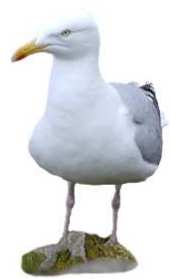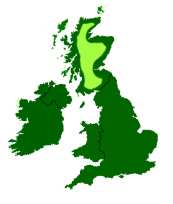|
Photography
|
Herring Gull Plate | ||||
|
|
|||||
| Distinguishing Features |  |
||||
| Height 60cm (24in), Grey back and wings. Wing tips are black with white spots. Pink legs and yellow bill with red spot. Both sexes alike. | |||||
| Food | |||||
| Offal, and carrion, shellfish, other birds eggs and chicks. Will also scavenge rubbish tips and can catch diseases from bacteria found in the rubbish. | |||||
| (Laridae) larus argentatus |
|||||
|
|
|||||
 |
Nesting | ||||
| Between April and June. Clutch of 2 to 4 eggs, olive brown with dark markings. Incubation appx 28 days. Eggs tended by both parents. | |||||
| Habitat | |||||
|
Breeding mainly on coastal areas, cliff faces, beaches, shingle areas, inland towns and parks, reservoirs. |
|||||
|
The darker green on the map above indicates
where you are most likely to see a Herring Gull.
|
|||||
|
|
|||||
| Other information | |||||
|
The Herring Gull is one of the most common gulls found on the coast. Its call is synonymous with seaside towns. One of its unusual habits is dropping shellfish from height to break open the contents. Breeding in colonies the Herring Gull will defend its territory from attacks on its chicks and eggs which it will readily take from unguarded nest. The nest built by both parents consists of a large mound of vegetation situated on the ground, cliffs and even buildings. After hatching the chicks plumage takes three years to acquire its adult plumage. |
|||||
| [Home] [News] [Gallery] [Birds] [Discover] [About] [Contact] [Members] | |||||